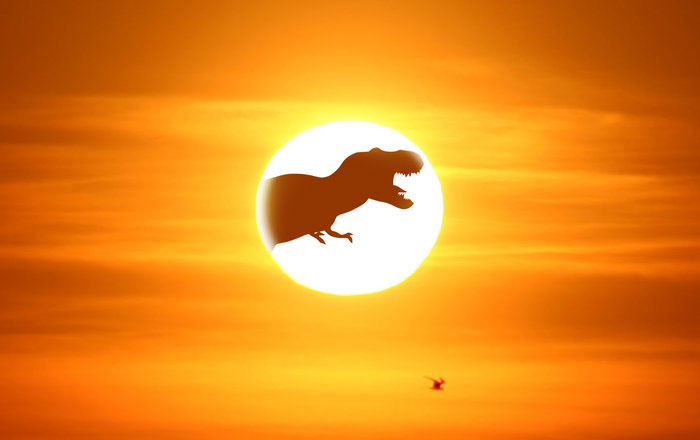Carnivorous dinosaurs make people vulnerable to ultraviolet rays
According to the Current Biology magazine, when hunting human ancestors, carnivorous dinosaurs can affect our bodies without the protection against ultraviolet radiation - reactivation due to light. light or photoreactivation . Somali blind fish has helped biologists discover that.
It is known that damage in DNA caused by ultraviolet radiation is overcome by reactivation by light. Researcher Nicholas Folks of Karlsruhe Institute of Technology, Germany, one of the authors of the study, explained that this repair mechanism is very effective, so most species and mammals have preserved That mechanism for millions of years. But some species, including humans, do not have this protection.

At the time of the dinosaurs rule, human ancestors had to live at night or live underground.
Biologists have found a way to explain it through a study of Somali cave fish Phreatichthys andruzzii . After comparing the mortality rate and DNA testing of fish, scientists concluded that, during evolution, cave fish have lost the ability to reactivate due to light. This is because millions of years of fish live in absolute darkness, resulting in DNA photolyases - key substances for reactivation by light, gradually disappearing.
This study allows scientists to hypothesize that the ancestors of mammals, including humans, may also be incapable of re-activating due to light due to living in the period of children. Predatory dinosaurs dominate absolutely, and in order to survive, those species must be nocturnal or live underground. That is why they have lost nearly all of the protection mechanisms against ultraviolet radiation.
After the extinction of the species, mammals can spread throughout the planet, but their ancestral heritage still exists. That's why modern humans are vulnerable to ultraviolet radiation.
It is known that ultraviolet radiation can cause burns, mutation stimulation leading to premature skin aging, melanoma or even skin cancer.
- How to deal ultraviolet rays in the hot season
- 5 ultraviolet environments much less expected
- Things to know about ultraviolet (UV)
- Discovered new carnivorous dinosaurs who once lived in the desert
- Ultraviolet light from the sun causes DNA damage
- Ultraviolet warning bracelet
- Use ultraviolet rays to avoid enemies
- Erotic dance of carnivorous dinosaurs
- Why should I wear sunglasses
- Bad luck makes dinosaurs extinct
- Discover new carnivorous dinosaurs
- NASA prepares to launch satellite observing the sun
 Discovered an ancient centipede fossil 99 million years old
Discovered an ancient centipede fossil 99 million years old Discovered bat-like dinosaurs in China
Discovered bat-like dinosaurs in China Discovered a 200-year-old bronze cannon of the coast
Discovered a 200-year-old bronze cannon of the coast Discover 305 million-year-old spider fossils
Discover 305 million-year-old spider fossils